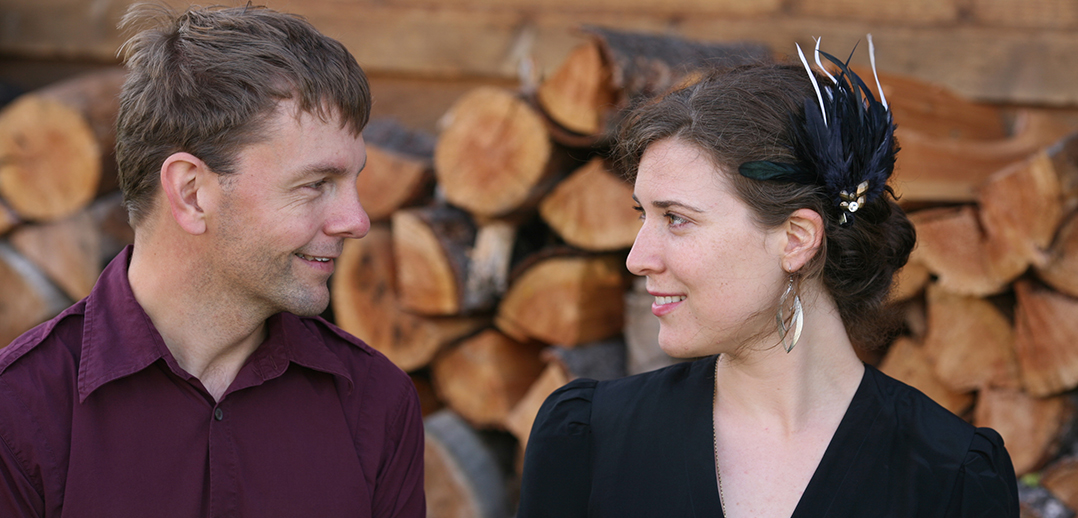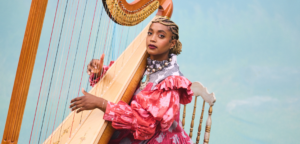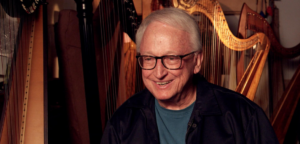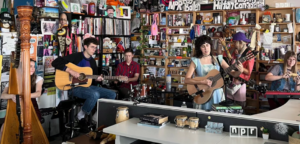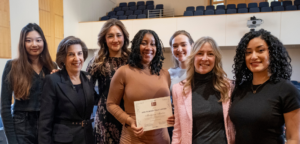Seattle harp and guitar duo March to May come out with their new album Through the Night on April 21. The “folk-tinged” duo featuring Beth Wesche on harp and Darren Guyaz on guitar got its start in 2012 and shortly after released their critically acclaimed Water’s Edge Ep. Likened to Damien Rice, Robert Plant, Alison Krauss, and others, describing March to May’s sound is a little hard to pinpoint so you’ll just have to give them a listen for yourself. We caught up to ask them more…
Let’s start with the obvious: what does the name March to May signify?
We chose the name March to May for a couple of different reasons. We wrote our first song together in March and decided to move forward as a band together in May, so it seemed fitting, and we liked the alliteration and the idea of marching forward towards Spring. The fact that March and May are our birthday months was actually a coincidence, but definitely makes it an even better fit.
Why did you decide to start playing together?
Our musical connection was immediate and deep —we both knew that we wanted to take our music as far as we could from the start. We’ve got a strong musical connection and work really well together, which has only gotten stronger over the years —I think we can safely say it was a good choice, and we’re not planning to stop any time soon!
How do you describe your music?
Our music is a bit hard to describe—the sound is definitely recognizable, but we haven’t found a clear genre that gives listeners a sense of what to expect. The sound blends folk, classical, and pop elements (Celtic harp, acoustic guitar, strings) with tight vocal harmonies and a strong lyrical presence. We call it “modern folk,” in the vein of artists like Damien Rice, the Swell Season, The Civil Wars, and the Barr Brothers. It’s mellow, melodic, and interesting —we think you’ll like it!
Because we’re Harp Column, we need to ask a few obviously harp-slanted questions. Can you tell us a bit about Beth’s harp background?
As a kid, I was a vocalist and a competitive gymnast—not a harpist at all. When an injury put an end to my gymnastics career, I started pursuing music more seriously. A friend’s mother played the harp, and I found the sound really compelling. It wasn’t long before I picked up harp to fill the void that gymnastics had left, focusing mainly on classical and folk music. Playing the harp grounds me—it gives me a new way to understand and interpret the world, and a way to give voice to what I feel when I can’t find words.
What type of harp do you play?
I play a maple Dusty Strings FH36. I love the bright, full sound of their instruments, and the size makes me feel like I’ve hit the perfect balance between tone quality and range and portability. Dusty Strings was kind enough to install a harp pickup for me when I first started gigging, as well, which was definitely a good call.
Any harpists you particularly admire?
I absolutely love Tom [Moth’s] work with Florence & the Machine. Not only do I think his parts and playing are brilliant, but I love the fact that he’s helped bring the harp such visibility in the kind of band in which people wouldn’t normally think to find it. Separately, I also admire Kim Robertson for her arrangements. When I first started playing, her books helped inspire me to think about playing music as a way of expressing a feeling rather than just notes on a page, and to not be afraid of changing what I play to get the feeling right.
How do you see the harp fitting into your ensemble?
The harp is definitely a lead instrument in our sound. It’s been an amazing experience to be able to use it as a vehicle for what we do with March to May—harps are lacking in a lot of contemporary music (with a few notable exceptions!), and I really like that the harp’s unique voice has such an influence on the feel and personality of what we write. I also recognize that we get a lot of people at our shows who have never seen a harp live before. They’re often curious, and it’s gratifying to know that I’ve been able to pique their curiosity about harps in general.
Do you worry about stepping on each others’ toes since the harp and guitar have such a similar sound?
Not really! Darren mostly plays rhythm guitar, so I come in on the harp in more of a lead role, playing counter melodies to whatever we’re singing or he’s playing. The balance between the harp and guitar is much more conversational than competitive.
What’s next for you?
We’re really proud of this new album, and we’ll be playing around the country this year in support of it. After that? More recording, more videos, international tours —we’ve got so much we want to do with our music! The only limiting factor is enough time to do it all! You can keep track of where we’re at on our website and social media.
Anything else you want to let Harp Column readers know?
We’re always interested in hearing about interesting harp-related things—songs we should cover, places we should play, people we should play with, or things we should try out. Find us on social media or shoot us an email, we’d love to hear from you!
Find out more about March to May at www.marchtomay.com or on Facebook.





